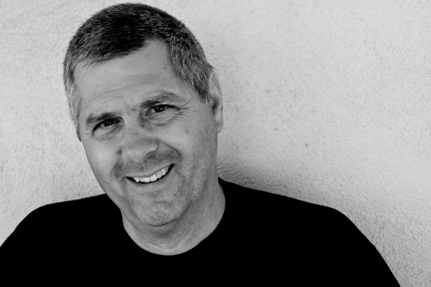In an earlier post, I mentioned that I attended a presentation at the University of Utah on “The Value of Design in Business” by Thomas Lockwood of Lockwood Resources. The presentation really resonated with my personal vision and long term goals, so I reached out to Thomas afterward and set up a brief phone interview.
Spencer: Thomas, with your education originally in business and the visual arts, how did you make the jump to product design?
Thomas: After I graduated from Eastern Michigan University, I started looking for a job that aligned with my love for skiing, climbing, and spending time in the outdoors. I was hired at CAMP7, a company that specialized in down sleeping bags and jackets as well as some equipment. I was hired as a graphic designer, but placed in the same office as the R&D team. I was interested in some of their projects and ended up making a few successful prototypes before they changed my job description to product and promotion manager which allowed me to put time into graphics and advertising while also testing products and innovating. About this time CAMP7 was contacted by 3M about a material they were developing for cleaning that had a ton of surface area (later to be known as Thinsulate). 3M found that thinsulate had similar properties to down, and reached out to CAMP7 because of the use of down in many of their outdoor products. So we started exploring the use of thinsulate in combination with gore tex (also a very new material at the time) and doing research with athletes to see if this combination would improve performance and wick away sweat better than existing materials. The material was a complete success and we ended up designing the uniforms for the US olympic nordic skiing team at Lake Placid in 1980.
Spencer: What were some of your other professional experiences that prepared you for starting Lockwood Resources?
Thomas: After working for CAMP7 I decided to start my own product consultancy, Imagination Arts. I ran that for about ten years before selling the company and beginning work for one of my clients, Storage Technology Corp. I started at Storage Tech as the Art Director and over time was promoted to Global Brand and Design Manager. While at Storage Tech I took advantage of their tuition reimbursement program to get an Executive MBA in Design Management and a PhD in Integrated Design Management from the University of Westminster. After Storage Tech was acquired, I landed a position with Design Management Institute (DMI) which gave me the opportunity to travel, arrange design conferences, and speak on design topics regularly. Together, these experiences helped me form my understanding of the value of not just design, but design management. Successful design goes beyond the product to the people and their environment.
Spencer: At what point did you decide to start Lockwood Resources and focus on connecting creative leadership professionals to companies?
Thomas: While at DMI, I had a lot of people approach me looking for recommendations on design hires. So I started Lockwood Resources to fill this need. Using my network and industry experience, it has been really rewarding to fill this role. My clients are happy that I have helped them fill key positions in their organization, and the designers are happy to find leadership positions at these influential companies.
Spencer: How do you see the design industry evolving in the future?
Thomas: I think companies like IDEO are leading the way to the future of design. The greatest value will come from helping companies to develop solutions beyond products or branding that are more focused on consumer experiences. For example, look at something like a person’s experience buying a plane ticket, parking and checking in at the airport, dealing with luggage, finding their gate, etc… each of these experiences is controlled by a different organization. There are financial, logistical, and digital problems all being solved by different organizations. What if there was a position that oversaw the whole experience to ensure that all of these solutions were cohesive? You’d see an increase in customer satisfaction, and therefore an increase in business. This is currently difficult to do within organizations because there is no clear owner of the entire ecosystem within a company. Engine, a Service and Customer Experience Design Consultancy in the United Kingdom, helped Virgin Airlines to improve this process with great success at Heathrow London’s Terminal 3. You can see an overview of their work here.
If you are interested to see the slides from Thomas’ presentation on Design in Business, you can find them here.
